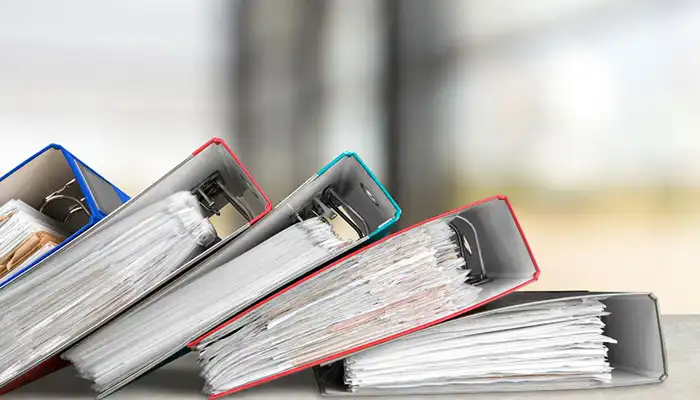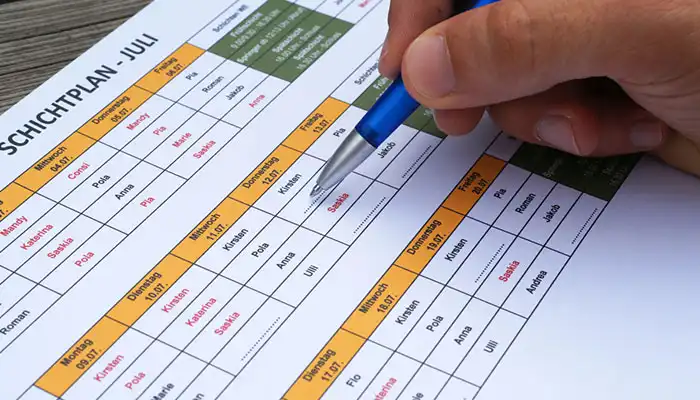Free Downloadable Animal Classification Sheets for Kids
Introduction
(You probably have, too, even though you don’t have kids) You probably also wondered the best way to teach your kids about the animals of the world. What you might not know is that understanding principles of animal classification can provide a firm base for all sorts of biological learning at a young age, and that kids love to learn about their pets, backyard animals, zoo animals and more.
You might be thinking all this sounds good in principle, but where do I start? How do I start (and keep it going)? Download our free animal classification sheets for kids. Seriously, take back their bedtime stories and read these to them.
After all, how many times have you sat around a dinner table, or listened with anticipation to a child discussing their favourite subject in Sunday school, only to have it be the predatory mollusc or the spongiform lionfish?
We all need to care about nature. We all have a role to seek and understand. Animal classification is the gateway by which we can understand our role and find that deeper connection to the natural world. And the best part? You can do it right now, in your living room, or classroom.
Why Animal Classification is Important for Kids
Second, why is teaching kids animal classification so critical?
One reason: learning to classify animals requires meticulous observation. Now, as every parent and seasoned zoo visitor knows, observing kids observe animals can be a tedious affair for an adult.
However, learning to classify animals in an objective manner, paying attention to body shapes and form, separating out animal characteristics from each other in our minds (feathers versus scales versus fur; wild versus domesticated) and then setting up mind maps – is a good way to ensure that children become better observers more generally in life, as well as in the realms of science.
The other enormous benefit is that it teaches kids about biodiversity. It helps them to realise that there’s a wealth of different kinds of living things in the world, each with a unique role to play in its ecosystem, and it can help to foster a spirit of custodianship for our planetary home from an early age.
At the very least, it’s a nice way to remind them that okra is, after all, just a weed. The other key benefit of this system of classification is that kids love animals. Or rather: they love any member of the ‘animot’ class. Begin to talk to them about mammals, reptiles or amphibians, and those classification sheets become a language they can relate to.
Indeed, animal taxonomy also dovetails really nicely with real-world experience; recall your reaction the first time you saw a turkey vulture or a phoebe? Whatever your feelings about the choice of taxonomy, now you know what the word means.
On your next trip to the zoo, your child’s experience will be changed: the trip will be transformed from a walk in the park to a learning experience, as he or she takes in the animals with new eyes (and beaks, and legs, and so forth).

Features of the Animal Classification Sheets
So we turn our attention to what it is about these animal classification worksheets that makes them so special. First, each worksheet has been designed for kids — colours are bright, illustrations are fun, and the text is simple and easy to read.
They cover all the groups of animals: mammals, birds, fish, reptiles, amphibians, and invertebrates. In this way, kids are introduced to animals across the entire spectrum.
Also, I love the interactive elements. I’m not a fan of those boring worksheets — this app is packed with activities that allow your child to work in a hands-on manner. For instance, your kid can sort animals into several groups, match animals with their natural habitat, or identify animals based on their features. And all of these little games are fun and engaging.
Your child won’t even know he learns something – he just has a great time!
The other – and possibly even better – thing is that they cater for all sorts of learners: there are pages for children who can learn best through looking, pages for those who read (and need the exercise of following a series of paragraphs), and pages for those engaged in hands-on tasks, such as drawing and colouring in.
The mix is wonderful, allowing kids to learn about and relish animals in multiple ways.
How to Use These Sheets in Different Learning Environments
Whether you are a parent or a teacher, these animal classification sheets work great anywhere to supplement a learning environment. Parents homeschooling can have great fun using these sheets as a supplement to learning at home.
These sheets can be integrated as part of your daily homeschooling lesson, or you can easily fit them in as part of your weekend fun activity. You can match these sheets with one of the many nature documentaries from BBC America or have a tiger-themed day in a local or national zoo for a full day of learning.
These sheets provide valuable aids for any classroom. A teacher can use the sheets for direct learning during science lessons, for group work activities, or even for the students themselves, who might create posters or presentations on a particular animal after learning about it. With hands-on activities for teamwork, the challenge of learning can be made fun and personalised.
You can also tie worksheets in with more active learning by using them prior to or after doing something physical, such as: after your child classifies animals on paper, have them find toy animals or pictures of animals to explore in their surroundings after your child sorts minerals, have them sort things in their environment into groups that are similar or differentThere are also many pauses built into the worksheets to provide opportunities to discuss difficult words or concepts, and holistic activities to tie the learning together with something concrete in the real world.
Expanding Learning Beyond the Sheets
You can still continue learning even after your kids complete a worksheet. There are many ways to extend the lessons on the worksheets. Reading books and watching videos about animals are my favourite ones! There are a lot of kid’s books that go into details about taxonomy of animals.
Some of my daughter’s favourite ones go into great detail about types of animals and their attributes in an interesting and humorous way. Pairing books and worksheets certainly can help with learning and keep your child interested.
Field trips are an especially great way to bring the learning to life. Visit a local zoo, aquarium, or natural history museum and point out animals and other evidence of what your child has been learning about.
See if your child can sort them by what they have learned; this practical application will not only give your child a deeper sense of understanding about the subject matter, but it will make the experience far more rich and rewarding for everyone.
If you want to utilise some of these digital resources, there are also a number of educational apps and websites that offer interactive animal classification games, mirrored by the above worksheets, or that can pep up what you find there by providing a different medium for learning.
They can be a great way to add some educational value to your bag of tricks when you’re traveling or want to quickly engage your child in learning.
Where to Find and Download the Sheets
It is finally time to talk about the good stuff – how to download these free animal classification sheets! You can download these in a variety of places online and a great starting point is a resource website that is tailor-made for early learning. Look and see what other resources you might be able to use.
Downloading the sheets is easy. Most of the sites provide a facility to download their sheets in PDF format. You can then print them out at home. Some might require you to create an account or sign up for a newsletter before you can download the sheets, but hey, it’s a small price for such a great resource.
When you do have the sheets, you are now ready to guide your child on his first solo trip to the animal kingdom.
And be sure to continue to check back, since many educational websites frequently update the content on their site. Additional worksheets or activity sheets, information that relates to a current event or season; there’s usually something new to check out.

Conclusion
It’s enough to start teaching kids about animal classification without having to fear that you’re out of your depth. Free downloadable animal classification sheets can be the means for making animal classification fun, supportive and effective to your child and family.
There are many activities possible, presented in a fun and easy to use way for young children. Isn’t it time you introduced your child to some of the awesome range of animals on our planet in a simple, fun and easy way. Download to start today. Teaching kids about animal classification does not have to be scary. Download these sheets and make learning fun.
Free Downloadable Animal Classification Sheets for Kids
Picking up where we left off, free downloadable animal classification sheets for kids could not be a greater resource for parents and teachers alike. This is because these sheets are not just cute, time-saving materials meant to help kids learn to classify animals; instead, they are tools which could lead to a lifelong pursuit of learning more about the world of natural sciences. Meaning, if incorporated into everyday schooling routines, they could help a child build firm science standards while making the learning process fun and enjoyable.
Maximizing the Use of Classification Sheets
Titles like ‘Download free animal classification sheets for kids’. Let’s start with mammals, reptiles, birds, amphibians, fish, and invertebrates. The young men and women who will be writing scientific papers in 20 years need to work their way up. As Gould once said, they’ll need to ‘climb the tree of life’.
Hands-On Activities to Reinforce Learning
Arguably, the best approach to reinforcing what your kids learn off these sheets is to make them hands-on; do a worksheet on mammals and then make a mini-book about your favourite mammals, for instance. It’s not just that this action reinforces knowledge; it makes learning something personal and creative.
You could ask kids to pretend they are builders on a construction site, separating toy animals into their correct compartments in an ‘Animal Kingdom’ play arena This approach works well for younger children, who learn best when they are at play. The real trick is to turn the free printable animal classification sheets for kids into something ‘active’ rather than just paper based, and more enjoyable, making learning fun!
Incorporating Technology into Animal Classification
These days, you can supplement free animal classification worksheets available online with apps and videos, too. There are many apps for children enabling them to learn about animals in an interactive way. For example, after educating a child about birds by using a worksheet, one can watch a short educational film about how birds build their nests. Combining different media is important, because children typically grab information in many different ways.
FAQs About Free Downloadable Animal Classification Sheets for Kids
Q1: Do the worksheets fit all ages?
YES! These free printable fun animal classification sheets for kids are made to be adaptable. They’re perfect for kids in preschool and the early in primary school grades, but can be made more challenging for older children who want a refresher on animal classifications.
Q2: Can this be used in a group activity?
For instance, when there’s a playdate? Are these sheets intended to be used in groups for classification, where children discuss and talk about what they’re doing? A: Yes, it can work really well! Have all the kids work on the sheets at the same time, then discuss as a group what they’ve found and present their work to the group. Group activities like this encourages kids to learn how to work together and communicate well with each other.
Q3. Do you need anything more to use these worksheets?
None. The animal classification sheets for kids are printable, so you just need to download and print them on a printer, and you’re all set. Depending on the activity you might like to have some painting or colouring supplies, scissors and glue ready, but it’s just optional.
Q4: How can that be made more challenging?
For the older or more advanced students, you can expand on this worksheet by providing more specific classification categories, for example, the various subgroups of mammals, such as carnivores, herbivores, etc. You could also have them look up an animal from each group and write a small research report.
Q5: Are there any other resources to use in conjunction with these worksheets?
Yes. You can supplement these worksheets with books about animals, zoo trips or educational games. There are many great resources available on websites like National Geographic Kids, which can be great for complementing what your child is learning from these sheets.
Tips for Parents and Teachers
- Routine: Have your child use these sheets as part of a daily study session. The more consistent, the better.
- Do-It-Yourself Style: Let your child come up with the learning plan, choosing which animals to cover. A DIY approach allows kids to plan and make decisions, which in turn can make learning more interesting.
- Piggyback on Other Subjects: Link animal classification to other topics, such as geography (eg, where do different animals live?) or art (eg, drawing or channelling animal designs into some craft such as, say, pottery).
- Praise the Process: When your child completes a worksheet or correctly classifies a group of animals, verbally celebrate their accomplishment. This will reinforce a love of learning.
How to Expand Learning Beyond the Sheets
And remember, these free downloadable animal classification sheets for kids are just a starting point. Use them as a launch on established topics of the biology and ecology. You can introduce animal behaviours, diets, and habitats as the next step: after covering all the reptiles, talk about how these reptiles differ in their environment (chameleons change their colour to blend with the surroundings).
Getting Involved as a Family
Classification of animals can also be entered as a family project – moms and/or dads, aunts, uncles, older siblings, can join in games, quizzing, dialogues with children about species, classes, orders and phyla. Family projects are enjoyable and also strengthen bonds within the family.
Conclusion
Free downloadable animal classification sheets for kids provides a unique chance for your child to learn about animals in a fun way. With these sheets at your disposal, you’ll see your child’s journey towards a better understanding of animals change, and they can take every opportunity to discover, explore, and learn. From scavenger hunts to family fun, your child can bring these animal sheets to life.
In conclusion, whatever your status is being a parent, teacher or a caretaker, these fun and free classification of animals worksheet for kids are a must-have. Starting your lesson about animals to your little family is such an exemplary idea. After downloading it, watching your kids’ knowledge about all sorts of animals booms is an impossible scenario.



